Procedures for the falling number test
مرسل: الثلاثاء مايو 15, 2018 2:43 pm
The falling number test is used to evaluate the amount of sprout damage in Canadian wheats. Alpha-amylase is an enzyme found in sprout-damaged wheat. If germination occurs there is a dramatic increase of this enzyme.
The falling number is the time in seconds for a stirrer to fall through a hot slurry of ground wheat. The greater the amount of alpha-amylase in the wheat, the thinner the gelationized starch paste and the faster the plunger will fall through the slurry.
A high falling number or the longer it takes the stirrer to fall indicates the wheat is sound and satisfactory for most baking processes. A No. 1 Canada Western Red Spring wheat normally has a falling number greater than 350 seconds.
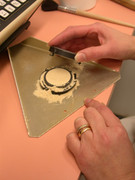
Step 1: A moisture test is done on a wheat sample that has been selected and ground.
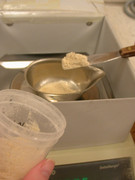
Step 2: A 7-gram ground sub-sample, based on a 14% moisture basis, is used for the falling number test.
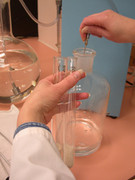
Step 3: Distilled water is added to the ground sample in a falling number test tube.
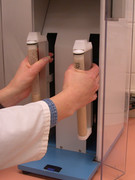
Step 4: The ground wheat and water mixture is thoroughly shaken, forming a slurry.
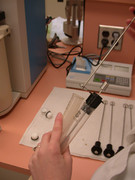
Step 5: A stirrer is placed in each falling number tube.
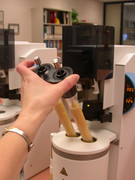
Step 6: Tubes containing the slurry are immersed in the boiling-water bath of the falling number apparatus. The slurry is stirred with the stirrer for 60 seconds then the stirrer is allowed to drop by its own weight through the ground wheat and water slurry.
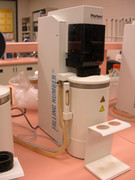
Step 7: The total time in seconds it takes the stirrer to reach the bottom including the 60-second stirring time is the falling number result, which reflects the sprout damage in the sample. The falling number reading is then recorded.
The falling number is the time in seconds for a stirrer to fall through a hot slurry of ground wheat. The greater the amount of alpha-amylase in the wheat, the thinner the gelationized starch paste and the faster the plunger will fall through the slurry.
A high falling number or the longer it takes the stirrer to fall indicates the wheat is sound and satisfactory for most baking processes. A No. 1 Canada Western Red Spring wheat normally has a falling number greater than 350 seconds.

Step 1: A moisture test is done on a wheat sample that has been selected and ground.

Step 2: A 7-gram ground sub-sample, based on a 14% moisture basis, is used for the falling number test.

Step 3: Distilled water is added to the ground sample in a falling number test tube.

Step 4: The ground wheat and water mixture is thoroughly shaken, forming a slurry.

Step 5: A stirrer is placed in each falling number tube.

Step 6: Tubes containing the slurry are immersed in the boiling-water bath of the falling number apparatus. The slurry is stirred with the stirrer for 60 seconds then the stirrer is allowed to drop by its own weight through the ground wheat and water slurry.

Step 7: The total time in seconds it takes the stirrer to reach the bottom including the 60-second stirring time is the falling number result, which reflects the sprout damage in the sample. The falling number reading is then recorded.